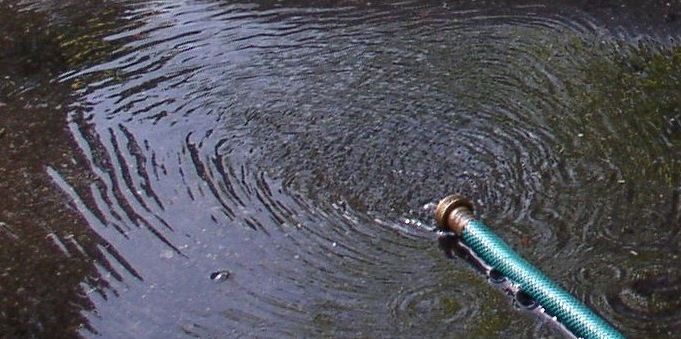Water lawns and gardens during the early morning hours or later in the afternoon/evening when more water will be absorbed and held by the soil. A high percentage of water will be lost to evaporation if you water during the middle of the day when it is hot and sunny.
Try a drip irrigation system that has emitters spaced at regular intervals that deliver a specific amount of water over time (e.g., 1 gallon per hour). Drip systems are good for areas with continual supplemental water needs, such as a vegetable garden.
If feasible, look for alternatives to watering with a hose. Most water sprayed with a hose or a sprinkler does not get to the intended plants and a high percentage evaporates before getting into the soil/root zone.
- For small areas or few plants consider using a watering can.
- For larger areas, consider drip irrigation or soaker hose systems.
- A soaker hose is a semi-permeable material that leaks water slowly along the entire length of the area. They are good for short-term use like watering a new planting until plants are established. A downside is that you cannot control the amount of water emitted and the hose material has a short life span.
- Water plants slowly at the base where water will go into the soil and be accessible to the roots.
- Deep, infrequent watering helps encourage a strong and robust root system. On the other hand, frequent, shallow watering results in weaker surface roots.
- Don’t spray: Spraying the foliage results in high evaporative loss and can encourage plant disease.
- Sprinklers should only be used for establishing new lawns.
Charles River Watershed Association https://cdn2.hubspot.net/hubfs/311892/Watering%20Tips.pdf


Recently on Twitter